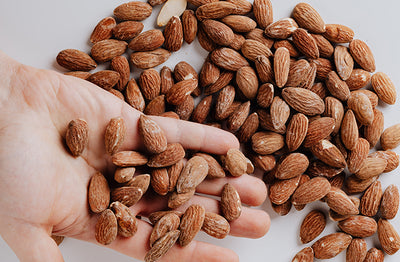Most Australians don’t really eat enough fish, or when they do, it’s often from the corner fish shop, smothered in batter and deep fried, but fish is not only a great addition to your diet for it’s nutritional value, it can also fight the bad fat that you might be eating at other meals!
What is it?
Fish come in lots of varieties, from small anchovies that you can eat whole to massive tuna that you can pay thousands of dollars for. While they all look different, they all can help you get a good dose of healthy fats in your diet.
How does it work?
That’s right,
HEALTHY fats.
Fish are rich Omega-3 fatty acids. They are massively beneficial in reducing swelling and countering the damage that Omega-6 fats (like the ones in red meat) can do.
In general, we should be eating about the same amount of Omega-3 as we do Omega-6 for, but on average, Australian eat around
20 times the amount of Omega-6 than they do Omega-3. That’s not a great ratio. If you were flipping a coin with a friend and you had to win 20 times and your friend only needs one, you’d be pretty confused on how the heck you’re going to come out on top without some heavy cheating.
Besides that, most fish is also high iodine and selenium, two important minerals that are fairly difficult to get from other foods. Iodine is great for immune function and Selenium can help you make antioxidants.
On top of all that, the protein found in fish is absorbed very quickly. It doesn’t require a lot of time for your body to break it down and use the nutrients in it.
Why would I want it?
Because you can absorb fish protein quickly, you won’t feel as heavy as you would with a belly full of steak. It’s also very low in trans fats, and the extra
Omega-3 will counter the swelling in your joints that too much omega-6 can do to you.
Who is it best for?
If you’re feeling a bit bloated from a high meat diet, or if your joints are aching and your immune system seems to be struggling, replacing a couple of meals a week with fish could be exactly what you need. You don’t need to go fancy, most fish is around the same price as steak, and you can grill it the same way. Add in some vegetables or salad (not the fried chips!) and you’ve got a damn fine meal! Fish is especially great for those on a
low carb diet, but really, including fish in your diet is good for
general health.

What are the side effects?
A lot of things that people mention about fish is mercury. Mercury is bad for you, really, really bad for you. It is present in most foods, from the sea AND from land.
Fish tend to absorb a bit more of it in their environment though, so if the fish is caught in a polluted area, it can have higher levels of mercury than you’d like. Make sure you buy from reputable places though, and you should be able to eat the fish you want. An even better option is to catch it yourself! There is nothing like a few friends around an open fire, grilling the fish they caught by their own hand.
Is it good for women too?
While plenty of women eat fish, a lot of pregnant women will avoid all seafood, because of the risk of mercury poisoning. This can affect the developing child, and while it’s considered fairly safe when you’re eating seafood caught in clean waters, any nutrients you need can always be consumed by supplementation, so it’s not really a risk you have to take.
Women who are not pregnant will get the same benefit from eating fish as men.
Conclusion:
Eating more fish can help a lot of Australian’s get a better mix of good fats, and can help you reduce the effects of the bad ones, so next time you fire up the barbie, think about throwing some fish steaks on there for a change - you might even love it!
Read More:
















